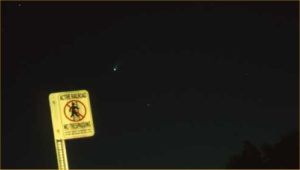
The most spectacular comet in living memory was bright, had multiple tails and remained visible with the naked eye for over a year. Hale-Bopp decorated the Earth’s night sky between 1996 and 1997.
Discovery of another comet C/2012 S1 (ISON) announced this week, if current predictions turn out to be correct, may exceed the spectacle even of Hale-Bopp.
The comet first photographed on 21st September by two Russian astronomers Vitali Nevski and Artyom Novichonok using the 0.4meter refelecting telescope of the International Scientific Optical Network (ISOC) was announced three days later.
The expectations of brightness and size sound too good to be true. Brighter than the full moon, visible in daylight and even a probability breaking up in to multiple smaller units as it approaches perihelion (closest point to the Sun). Predicting cometary orbits has come a long way over the last couple of decades. Even if the predictions are out by 50%, iC/2012 S1 (ISON) still has the potential for a night sky spectacle of a lifetime.
Comet C/2012 S1 (ISON) will get close not only to Earth and Sun (0.012AU of the Sun at the end of November 2013 and then to ~0.4AU from Earth at the beginning of January 2014) but also Mars! May be Curiosity will snap a few pictures too.